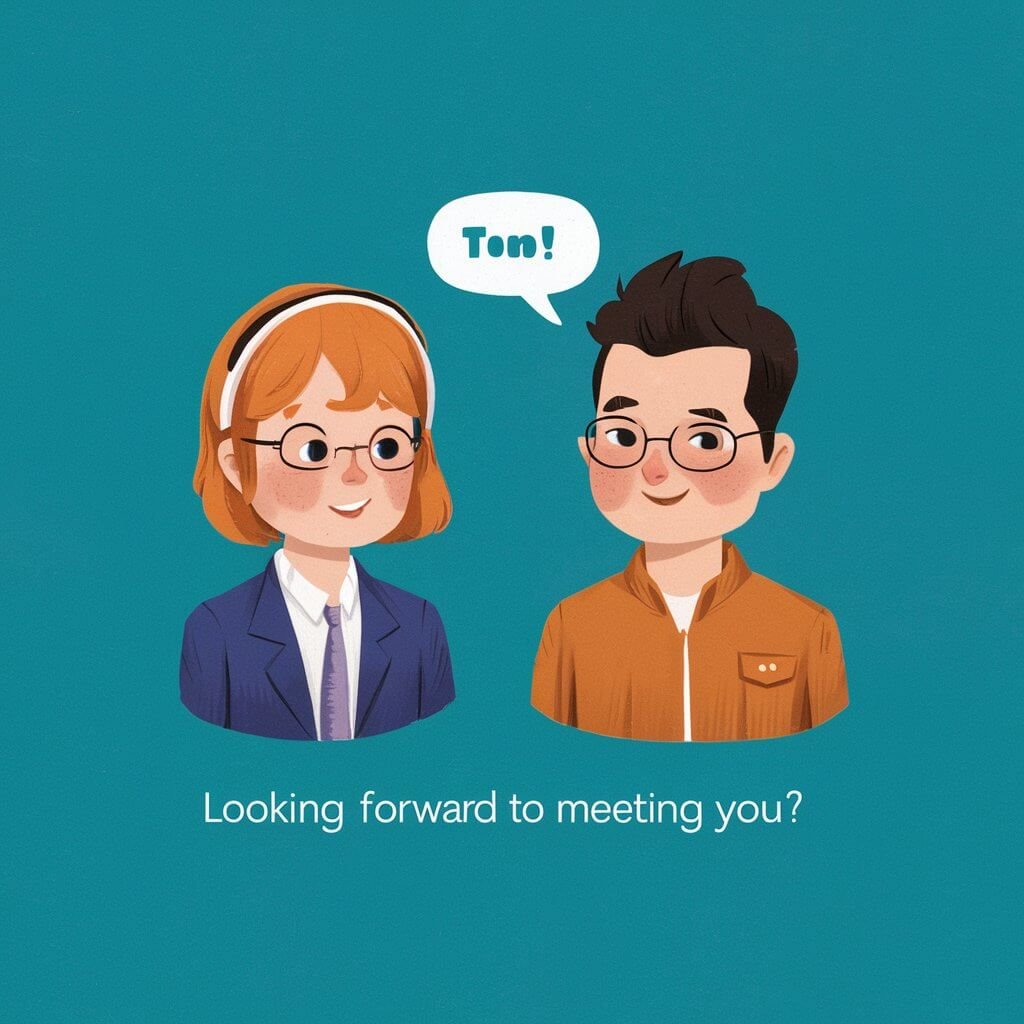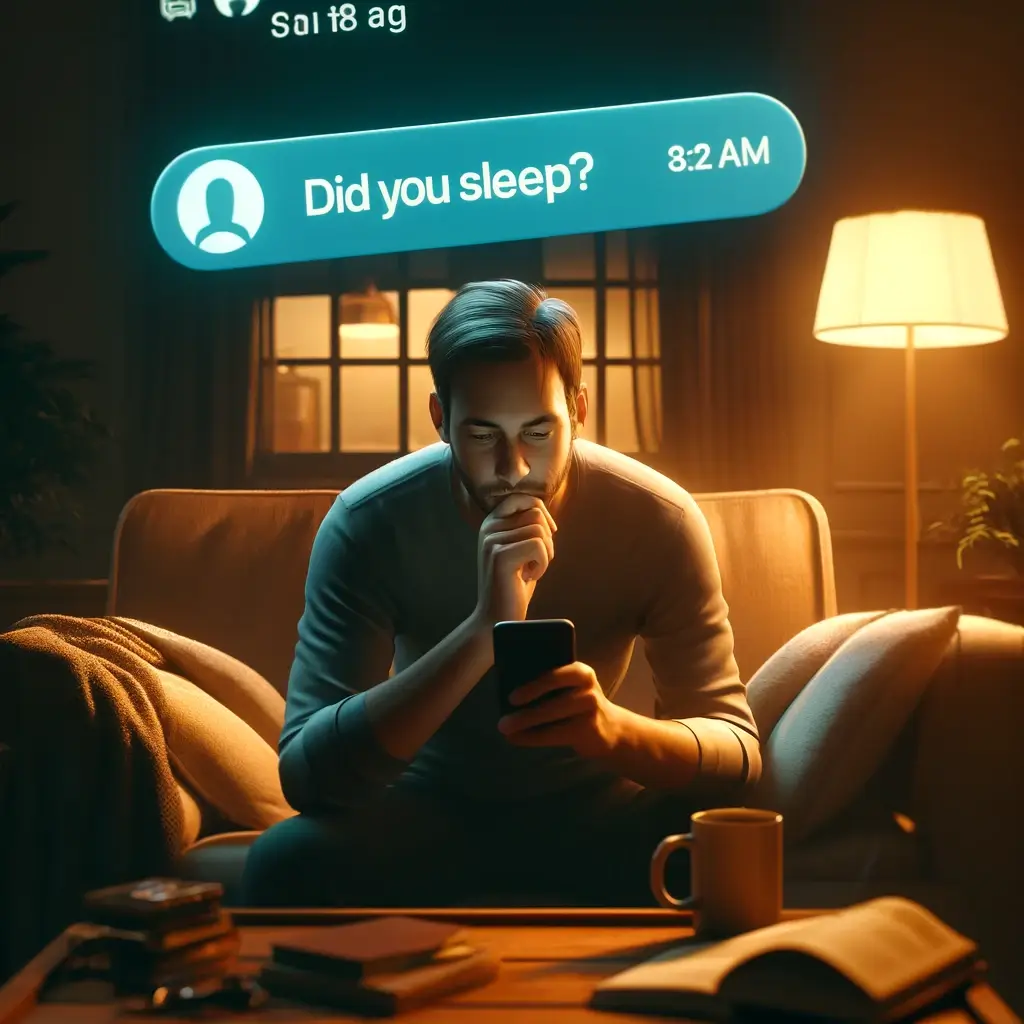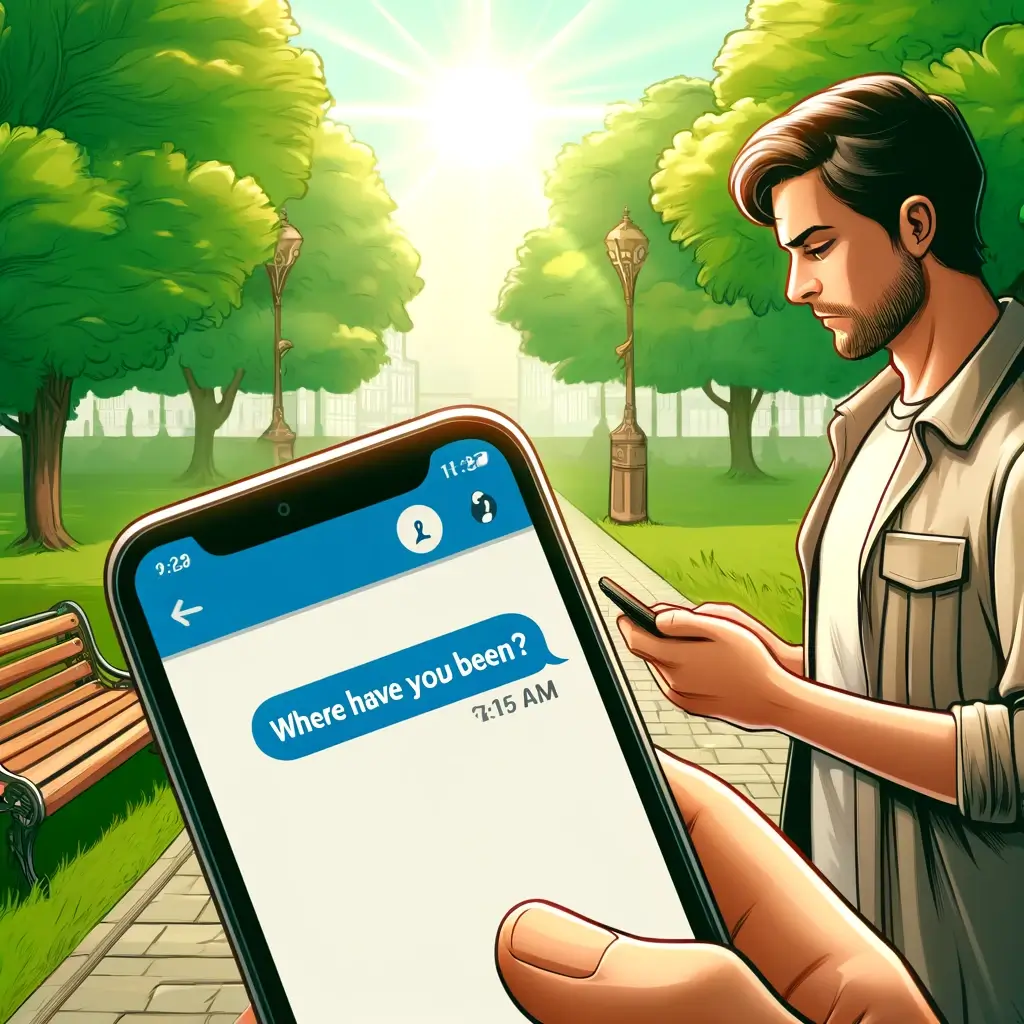
Reply with, “I’m excited to meet you as well. I look forward to our upcoming meeting.”
Meeting someone for the first time can be both exciting and nerve-wracking. Your response sets the tone for the upcoming interaction and can create a positive first impression. Expressing eagerness shows that you value the opportunity and are prepared for a meaningful conversation.
This can help in building rapport and establishing a solid foundation for future communication. Whether it’s a business meeting, a job interview, or a casual catch-up, a warm and enthusiastic reply can make a significant difference. It signals your professionalism and your genuine interest in the engagement, which can lead to more productive and enjoyable interactions.
The Importance Of Polite Responses
Polite responses hold significant value in both personal and professional settings. They reflect respect, professionalism, and a positive attitude. A polite reply can set the tone for future interactions and help build lasting relationships.
Creating Positive Impressions
First impressions matter a lot. A polite response like “Looking forward to meeting you” can leave a good mark. It shows you are excited and respectful towards the upcoming meeting.
| Polite Response | Impact |
|---|---|
| Looking forward to meeting you | Creates a positive impression |
| Thank you for your time | Shows appreciation |
| I appreciate your efforts | Conveys gratitude |
Building Professional Relationships
Professional relationships thrive on respect and communication. A polite response can strengthen these bonds.
- Respect: Shows you value the other person’s time and effort.
- Trust: Helps in building trust through respectful communication.
- Collaboration: Encourages open and positive collaboration.
Using polite responses can open doors to new opportunities. It helps in creating a network of professionals who respect and trust each other.
Always use polite responses in your professional emails and messages. They play a crucial role in shaping your professional image.
// Example of a polite response
Dear [Name],
Thank you for scheduling the meeting.
I am looking forward to meeting you.
Best regards,
[Your Name]
Understanding The Context
Knowing how to reply “Looking forward to meeting you” is essential. The context of your response can change based on several factors. Understanding these factors will help you craft the perfect reply.
Professional Vs. Casual Settings
In a professional setting, your reply should maintain a formal tone. It’s important to keep things professional and respectful. For example, you might say:
- “Thank you for the opportunity. I look forward to our meeting.”
- “I appreciate your time and look forward to our discussion.”
In a casual setting, you can be more relaxed. You can use friendlier language. For example, you might say:
- “Can’t wait to meet you!”
- “Looking forward to hanging out!”
Email Vs. In-person Interactions
Replies in emails should be clear and concise. They should also be polite and professional. For example:
- “Thank you for scheduling the meeting. I look forward to it.”
- “I appreciate your email. I am looking forward to our meeting.”
For in-person interactions, your reply can include body language. A smile or a handshake can convey enthusiasm. For example, you could say:
- “It’s great to finally meet you.”
- “I’m really looking forward to our conversation.”
Formulating Your Response
Receiving a message that says “Looking forward to meeting you” often requires a thoughtful reply. Your response should be warm and polite. It should also reflect your eagerness and professionalism. This guide will help you craft the perfect reply.
Acknowledging The Message
First, acknowledge the sender’s message. This shows that you have read and understood it. A simple acknowledgment can set a positive tone.
- “Thank you for your message.”
- “I appreciate your reaching out.”
These phrases are polite and to the point. They let the sender know you value their communication.
Expressing Anticipation
Next, express your anticipation for the meeting. This will show your enthusiasm.
- “I am excited about our meeting.”
- “I look forward to our discussion.”
Use phrases that convey your genuine interest. This helps build a positive relationship.
Let’s put it all together in a response:
Thank you for your message. I am excited about our meeting. Looking forward to our discussion.
Such a reply is professional and engaging. It acknowledges the message and shows anticipation.
Professional Responses
Crafting a professional response to “Looking forward to meeting you” is crucial. The right reply sets the tone for future interactions. It’s essential to use appropriate language and show respect. Below are some tips and examples to guide you.
Formal Reply Examples
A formal reply ensures you appear professional and respectful. Here are some examples:
| Scenario | Example Reply |
|---|---|
| Business Meeting | Thank you. I am also looking forward to our meeting. |
| Interview | I appreciate the opportunity. I am excited to meet you. |
| Conference | Thank you for the invitation. I am eager to meet you. |
Appropriate Tone And Word Choice
Choosing the right tone and words is essential. A professional tone is polite and clear. Here are some tips:
- Be Polite: Always start with a thank you.
- Be Clear: Use simple and direct sentences.
- Be Respectful: Show appreciation for the opportunity.
Here are some word choices to consider:
- Excited: Shows enthusiasm and interest.
- Eager: Displays readiness and anticipation.
- Appreciate: Expresses gratitude and respect.
By following these guidelines, your replies will always be professional and effective.
Casual Responses
Replying to “Looking forward to meeting you” can be fun and casual. It’s important to keep the tone light and friendly. Here are some ways to craft casual responses.
Friendly Reply Options
Here are some friendly reply options:
- Can’t wait to meet you!
- Excited to see you!
- Looking forward to it!
- It’ll be great to meet you!
Balancing Informality And Respect
It’s important to balance informality with respect. You want to sound casual but still show respect. Here are some tips:
- Use friendly language – Keep your words simple and warm.
- Show enthusiasm – Express genuine excitement.
- Be polite – Mind your manners even in casual replies.
| Formal Response | Casual Alternative |
|---|---|
| Looking forward to meeting you too | Can’t wait to meet you! |
| I’m excited for our meeting | Excited to see you! |
Email-specific Replies
Crafting the perfect email response can be challenging. Especially when you want to convey enthusiasm and professionalism. Here, we discuss how to reply with “Looking forward to meeting you” in emails. This includes subject line suggestions and closing remarks.
Subject Line Suggestions
- Meeting Confirmation: Confirming Our Upcoming Meeting
- Appointment Reminder: Excited to Meet You
- Follow-Up: Looking Forward to Our Discussion
- Introduction: Meeting Scheduled – Can’t Wait!
- Invitation Acceptance: Ready for Our Meeting
Using an engaging subject line captures attention. It sets a positive tone for your email. This also ensures your message stands out in the inbox.
Closing Remarks In Emails
Closing an email professionally is crucial. It leaves a lasting impression. Here are some effective closing remarks:
- Best regards, [Your Name]
- Kind regards, [Your Name]
- Warm regards, [Your Name]
- Thank you, [Your Name]
- Looking forward, [Your Name]
These closings convey enthusiasm and respect. They show that you value the upcoming meeting. A good closing can make your email memorable.
In-person Reply Strategies
Replying in person can be challenging. Expressing anticipation and professionalism is key. Here are some strategies to enhance your in-person replies.
Body Language And Tone
Body language speaks volumes. Maintain a relaxed posture. Stand or sit up straight. Make eye contact to show engagement. Smile to convey friendliness and openness.
Your tone should be warm and enthusiastic. Speak clearly and at a moderate pace. Use a friendly tone to make the other person feel comfortable. Avoid sounding rushed or uninterested.
| Body Language | Tips |
|---|---|
| Posture | Stand or sit up straight |
| Eye Contact | Maintain eye contact |
| Smile | Smile to convey warmth |
Quick And Effective In-person Replies
Be concise and genuine. Here are some examples:
- “I’m excited to meet you too.”
- “Looking forward to our meeting.”
- “Can’t wait to discuss more in person.”
Remember to listen actively. Nod and give verbal affirmations. This shows that you value the conversation. Avoid interrupting the other person. Wait for your turn to speak.
Avoiding Common Mistakes
Replying with “Looking Forward to Meeting You” seems simple. But, it’s easy to make mistakes. Here, we focus on avoiding those common errors.
Overly Casual Language
Using overly casual language can make your reply seem unprofessional. Avoid slang and colloquial terms. Instead, keep the tone polite and formal.
| Casual | Formal |
|---|---|
| Can’t wait to see ya! | I’m looking forward to our meeting. |
| See you soon, buddy! | See you soon. |
Neglecting Cultural Sensitivities
Neglecting cultural sensitivities can lead to misunderstandings. Always consider the recipient’s culture when crafting your reply. Some cultures value formality more than others.
- Use formal titles like Mr., Ms., or Dr.
- Avoid humor that may not translate well.
- Be aware of cultural taboos.
By avoiding these common mistakes, your reply will be respectful and professional.
Follow-up Etiquette
Follow-up etiquette is crucial for maintaining professional relationships. A well-crafted follow-up can strengthen connections and show your commitment. Here are some essential tips to ensure your follow-up is effective and polite.
Reiterating Interest Post-meeting
After a meeting, it’s important to reiterate your interest. This shows that you value the conversation and the potential opportunities. Here’s a simple template:
Dear [Recipient's Name],
Thank you for meeting with me on [date]. I appreciate the opportunity to discuss [topic of meeting]. I am enthusiastic about the possibilities we explored and look forward to our future collaboration.
Best regards,
[Your Name]
Maintaining Professional Courtesy
Maintaining professional courtesy is essential in follow-up communications. Always express gratitude and be concise. Use polite language and be mindful of the recipient’s time.
| Do | Don’t |
|---|---|
| Express gratitude | Be overly familiar |
| Be concise | Use slang |
| Use polite language | Be vague |
- Use a professional tone.
- Avoid informal language.
- Be clear about your intentions.
Frequently Asked Questions
How Do You Respond To Looking Forward To Meeting You Too?
Thank you! I’m excited to meet you as well. Let’s connect soon.
How Do You Say I Look Forward To Meeting You Professionally?
I eagerly anticipate our meeting.
How To Reply Looking Forward To Work With You?
I look forward to collaborating with you soon. Let’s create something great together. Thank you for this opportunity!
How Do You Say Looking Forward To Your Response Professionally?
I eagerly await your response. Thank you for your attention.
Conclusion
Crafting a thoughtful reply to “Looking forward to meeting you” is essential. It sets a positive tone. Use clear, polite language to express enthusiasm. This approach ensures strong connections and leaves a lasting impression. Remember, a well-crafted response can significantly impact your professional relationships.

